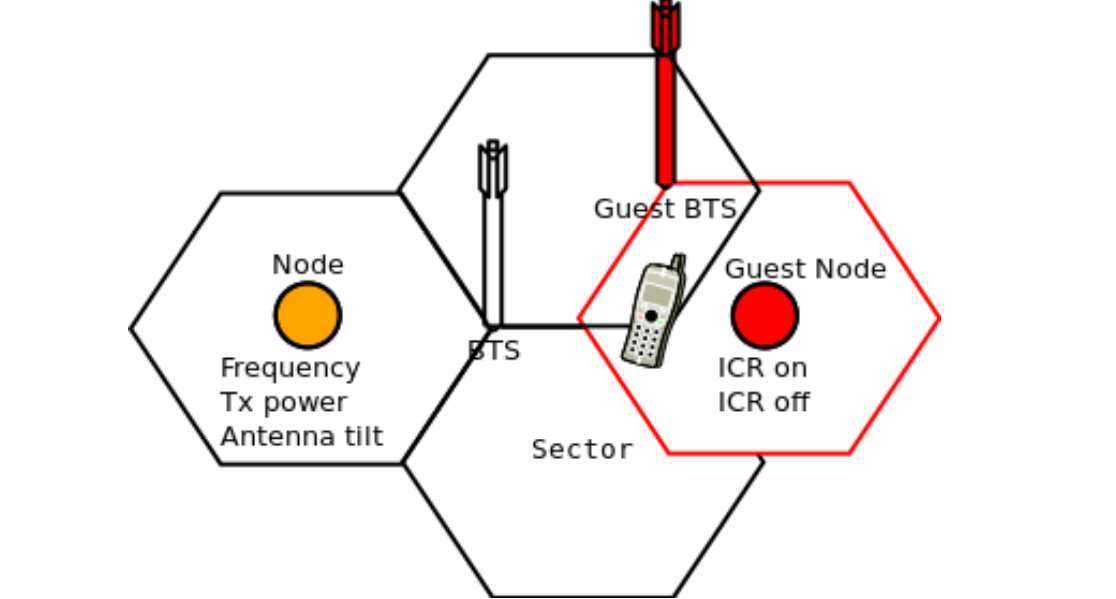This invention provides a smart method to reduce energy usage in cellular networks by adapting the operation of base stations in response to predicted traffic demand. The system includes traffic prediction, profit modeling, and optimization engines that simulate different configurations of the network. Based on this, the system selects the optimal operating state of the network that balances energy cost and revenue while maintaining the Quality of Service (QoS). The method supports integration with 2G/3G/4G infrastructures and utilizes intra-circle roaming (ICR) and dynamic base station adjustments to manage energy intelligently. This solution is particularly impactful in reducing telecom operation costs and promoting energy-efficient connectivity.
Cellular networks are designed to handle peak-hour traffic but continue consuming high energy even during low-demand periods. Turning off some network elements is currently possible but often compromises service quality. The need is for a system that reduces energy consumption without compromising user experience or network reliability.
- Traffic Prediction Engine: This innovation forecasts future traffic using historical and real-time metrics—voice/data load, throughput, user mobility, and energy usage—across 2G, 3G, and 4G services.
- Profit-Based Modeling Engine: It calculates revenue and operational costs in various network states using cost of electricity, diesel, maintenance, and revenue factors like traffic type (voice/data), time of day, and roaming income.
- Optimization Engine: It iteratively finds the most profitable and energy-efficient network configuration through simulation, while maintaining QoS standards.
- Dynamic Network Reconfiguration: The base stations adapt parameters like transmit power, frequency, and antenna tilt dynamically depending on expected load.
- Intra-Circle Roaming (ICR): It enables offloading to other networks during low-traffic periods without degrading coverage, avoiding energy waste on idle nodes.
- Real-Time Feedback Loop: It enables constant monitoring and adaptation based on changing usage, environment (e.g., temperature or grid availability), and business rules.
A prototype of the proposed system has been developed and tested in a simulated environment using real traffic data. It includes a prediction engine for traffic forecasting, a modeling engine for cost-revenue analysis, and an optimization engine to identify the most energy-efficient network state while maintaining QoS. The prototype also demonstrates dynamic base station reconfiguration and intra-circle roaming to manage low-traffic periods efficiently.
The technology has been modeled and validated using simulations, with an early-stage prototype demonstrating feasibility in lab settings. The patent has already been granted by the Indian Patent Office. The process is well-defined and technically complete, with detailed system design and functional workflows.
3
This technology reduces energy consumption in telecom infrastructure, contributing to environmental sustainability and reducing operational costs for mobile operators. It aligns with India's green communication goals and can extend affordable mobile coverage to rural areas by making networks more energy-aware and cost-efficient.
- Mobile network operators (2G/3G/4G) for intelligent BS operation(Telecommunications)
- Energy-aware infrastructure planning in smart cities (Smart Cities & Infrastructure)
- Sustainable network design aligned with climate goals (Energy & Environment)
- Low-power operation in large-scale IoT-based cellular deployments (IoT & Wireless Networks)
- Vendors offering network simulation, cost/revenue modeling, and automation tools (Network Planning Tools)
- Improving energy efficiency where power sources are limited or expensive (Rural Connectivity Initiatives)
Geography of IP
Type of IP
3673/MUM/2014
405912

